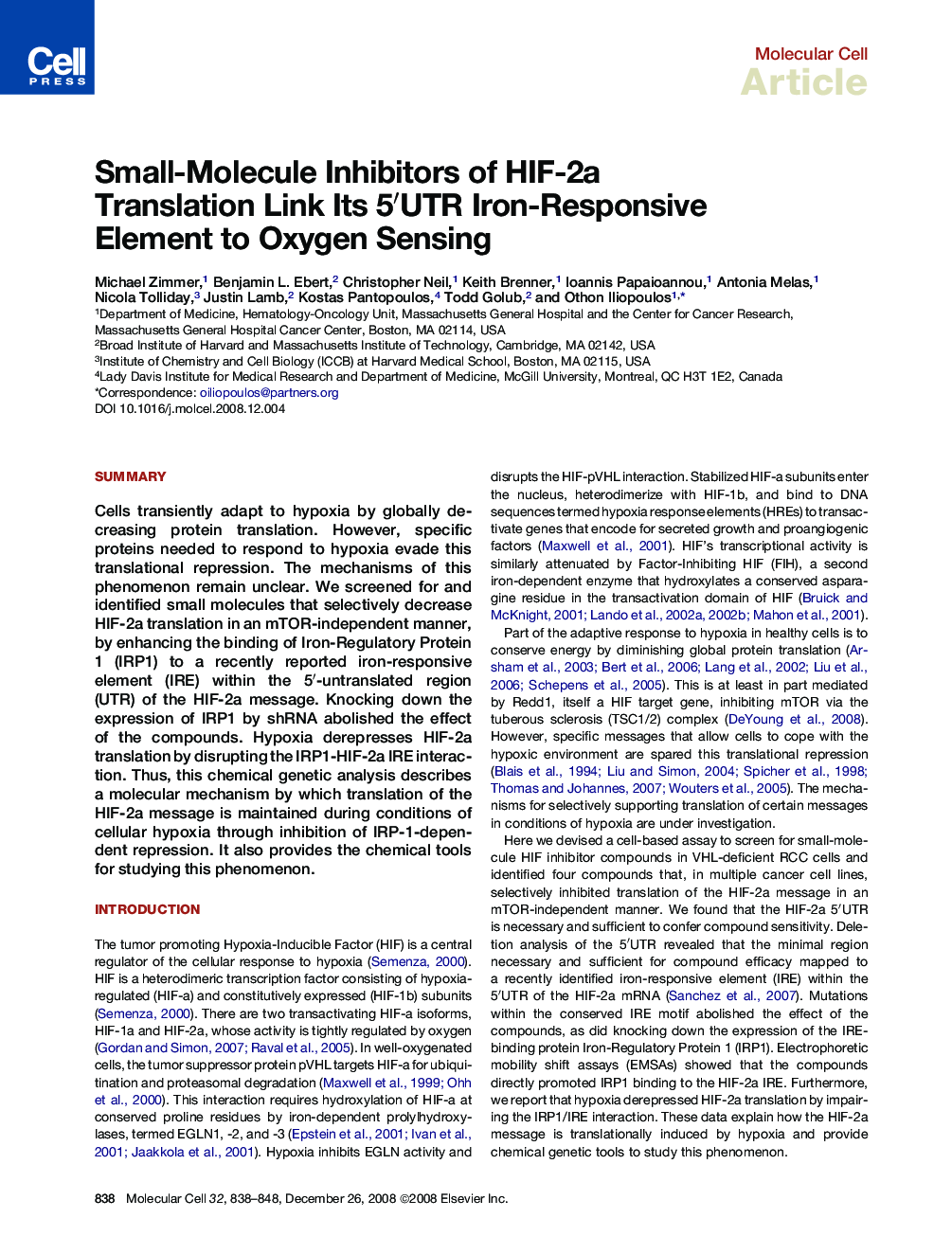| Article ID | Journal | Published Year | Pages | File Type |
|---|---|---|---|---|
| 1997241 | Molecular Cell | 2008 | 11 Pages |
SummaryCells transiently adapt to hypoxia by globally decreasing protein translation. However, specific proteins needed to respond to hypoxia evade this translational repression. The mechanisms of this phenomenon remain unclear. We screened for and identified small molecules that selectively decrease HIF-2a translation in an mTOR-independent manner, by enhancing the binding of Iron-Regulatory Protein 1 (IRP1) to a recently reported iron-responsive element (IRE) within the 5′-untranslated region (UTR) of the HIF-2a message. Knocking down the expression of IRP1 by shRNA abolished the effect of the compounds. Hypoxia derepresses HIF-2a translation by disrupting the IRP1-HIF-2a IRE interaction. Thus, this chemical genetic analysis describes a molecular mechanism by which translation of the HIF-2a message is maintained during conditions of cellular hypoxia through inhibition of IRP-1-dependent repression. It also provides the chemical tools for studying this phenomenon.
